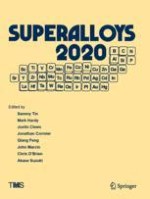2020 | OriginalPaper | Chapter
Laboratory-Scale Replication of Deposit-Induced Degradation of High-Temperature Turbine Components
Authors : Matthew Kovalchuk, Brian Gleeson
Published in: Superalloys 2020
Publisher: Springer International Publishing
Activate our intelligent search to find suitable subject content or patents.
Select sections of text to find matching patents with Artificial Intelligence. powered by
Select sections of text to find additional relevant content using AI-assisted search. powered by
